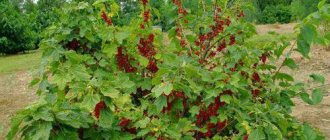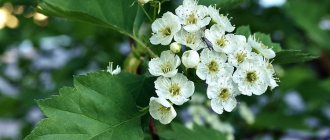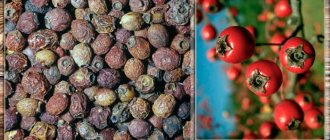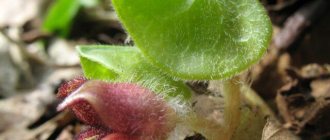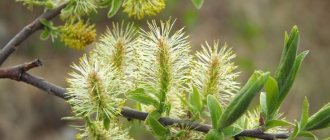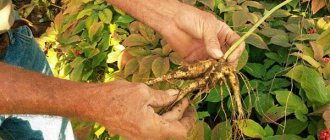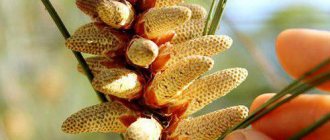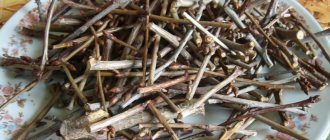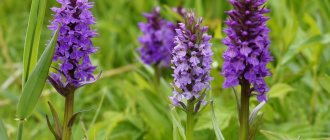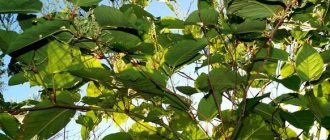Types: pharmaceutical and meadow, Roman, Persian, German, their features
It is a perennial plant. There are about twenty species of this herb, each type has its own characteristics and individual qualities.
These types are considered the most famous.
| Pharmaceutical chamomile | Its stem is no more than fifty centimeters high. The leaves are small. The plants reach the same height and bloom at the same time, creating a flowering plane. This type includes the following varieties: golden; southern; Caucasian; rough-fruited. A special feature is the pronounced aroma that is produced not only by the flower, but also by the leaf of the grass. |
| meadow daisy | It is also popularly known as common Nivyanik. The height of the stem reaches one meter, the diameter of the flowers is seven centimeters. In the middle the inflorescence is yellow, and the elongated petals are white. This species is often used by gardeners for landscapes and gardens. |
| Roman | The height of the grass ranges from fifteen to thirty centimeters. The leaves are medium-sized, dissected, slightly drooping near the shoots. The root system is branched and horizontal. The inflorescences are collected in neat baskets, the diameter of one flower is two to three centimeters; at home, the basket will change, becoming fuller. This species blooms in early July and continues to bloom until the end of August. A distinctive feature is the bitter taste. |
| German | The height of the grass is average, no more than forty centimeters. The stem is branched, erect, and there are no leaves near the ground. The leaves are oblong, slightly drooping. Flowering period is from July to August. The peculiarity of the plant is that one chamomile has both sexes. |
Each type has beneficial properties, since the composition is practically the same.
Let's watch a video that gives a detailed description of the field chamomile plant:
When do daisies bloom and when are their inflorescences collected?
Wild daisies bloom throughout the warm period of the year. The earliest to bloom in the spring are winter bushes that formed in the fall and overwintered under the snow - their first flowering baskets appear already in April-May, when constant warm weather sets in. Chamomile is not a primrose because it blooms much later than the snow has completely melted.
In the mountains, chamomile blooms in mid-summer.
Bushes that sprouted in spring bloom in June-July and can bloom until the end of September. If the bush grows in suitable conditions, new inflorescences constantly appear on it when the old ones have already been seeded. In winter there are no flowers on the chamomile bushes. In this case, only bushes that sprouted in the fall and managed to form a rosette of leaves overwinter. Bushes that bear fruit once die in the winter.
In the wild, the inflorescences are harvested for the preparation of medicinal raw materials in June-July, when the baskets are completely dry during the day. In this case, only those inflorescences are selected on which seeds have not yet appeared, since only they are suitable for the preparation of medicines and meet the requirements of most pharmacopoeias.
Inflorescences without white marginal flowers are no longer suitable for collecting and preparing medicines.
The chamomile herb itself, as well as its leaves, are not considered medicinal raw materials and are not used either in folk or official medicine. Moreover, pharmacopoeias limit the content of chamomile stems, leaves and peduncles in raw materials to 3% of the total mass.
When growing chamomile on special plantations, its inflorescences are collected two or three times a season during periods of the most abundant flowering, while the marginal flowers have not yet descended. Moreover, after the third harvesting, the plants have time to bloom and bear fruit again.
Mechanized harvesting of chamomile inflorescences on plantations.
On plantations, inflorescences are collected using special tractor-combines, and when manually collected in the wild, this is done either with bare hands or using special scoops with combs.
After cleaning, the baskets are laid out in a well-ventilated room, protected from sunlight, on racks, covered with gauze and dried for several days.
Sometimes chamomile inflorescences are dried in special dryers at a temperature of 45-55°C, which speeds up the whole process several times.
When dried, the inflorescences lose approximately 85% of their mass.
When dried, both yellow and white colors become cloudy and all raw materials acquire an inconspicuous brown color. During this time, the mass of inflorescences decreases several times. It is the dry baskets that are then packaged, sometimes crushed and packed into filter bags, and then either stored or sold.
The raw materials themselves can be bought in the markets by weight or “by the glass”, or can be purchased at the pharmacy in packaged form, including in filter bags. The most widely available products are from the manufacturers Pharmatsvet, Evalar, Krasnogorskleksredstva, and Fitofarm.
Field chamomile, description of appearance, plant structure
The most common type of herb is field chamomile. The plant is small, but with a strong root system. The height of the stem is about 40 centimeters. The buds are formed in one basket, the flowers are white with a bright yellow center.
It blooms in early June and delights with its tenderness until frost.
It grows in fields, wastelands, and on the edges of roads. Gives preference to alkaline, sandy and well-drained soil, loves a lot of light and warmth. Some people plant this grass for decoration in their garden; in this case, it is important to monitor the propagation of plants, since this species produces a lot of seeds.
Field chamomile adapts perfectly to any weather conditions and is frost-resistant.
The grass reproduces by seeds. The seeds are planted in the ground to a depth of no more than one centimeter.
The Legend of Romance and Love
There is one beautiful legend associated with the chamomile flower.
Once upon a time there lived a couple in love, Roman and Lyubov. One night the young man had a wonderful dream - he saw a touching and indescribably beautiful flower in its modesty with a yellow core and white petals. This flower was as simple, gentle and innocent as Roman’s feelings for his beloved.
After waking up, he found the flower from his dream growing very close by. Roman tore it off and presented it to Love. The girl was very touched by the beauty of the flower and named it chamomile in honor of her lover. Love really wanted that not only she would experience such feelings, and that all couples in love could give each other such flowers.
Roman heard her wish, but where can he get more flowers that appeared in his dream? Therefore, you will have to ask the king of dreams himself about this. The young man went to him and, despite how dangerous this journey was, Roman managed to get to the ruler of the kingdom of dreams.
The King of Dreams was indifferent and even cruel, but when he heard the story of this young man and looked into his pure eyes, he decided to fulfill his request. However, the price for this was high - Roman had to stay in his fantasy lands forever.
Love waited for long weeks and months for her closest person, until one day she saw a whole clearing of those very flowers, which she called daisies. And then the girl realized where her beloved had gone, and that now she would never see him.
Daisies are a symbol of innocent and boundless love
What does the plant contain?
The composition includes many trace elements, natural compounds, oils and substances necessary for the normalization and performance of the human body.
Contains:
- essential oil;
- coumarins;
- plant sterols;
- organic acids: anthemisic, nicotinic, caprylic and salicylic;
- flavonoids;
- carotene;
- tannins;
- multivitamins and polysaccharides;
- gum;
- plant compounds: mucous and protein;
- ascorbic acid;
- apigenin;
- chamazulene.
Chamomile oil is used in the production of natural cosmetic products. When dried, the plant contains one percent essential oil.
Such beneficial components make the herb indispensable in the treatment of many internal and external diseases.
Kinds
Chamomile grows throughout Russia, but the birthplace of the flower is North America. Among the variety of species of this plant, the following are distinguished:
- Pharmacy (medicinal).
- Tongueless (fragrant, green or fragrant).
- Sadovaya.
- Nivyanyk.
- Doronicum.
Important! The most widely used species is chamomile. It is not picky about conditions and has substances used in medicine and cosmetology.
In nature, there are about 60 species of plants that people use in economic, medicinal and culinary fields. But from all the diversity we can deduce the general characteristics of chamomile.
Rice. 1. Chamomile inflorescences
Healing qualities
Strengthens human immunity, increases resistance against pathogenic and dangerous microorganisms. A person suffers less from colds if the product is used as a preventive measure.
Stabilizes the performance of the digestive system, food is digested faster, and appetite improves.
Has an antimicrobial effect.
It acts as a good sedative, but does not affect the body as a sleeping pill.
Restores the functioning of the kidneys, liver, and stomach.
It has a restorative, diaphoretic and anti-inflammatory effect, quickly eliminates spasms.
Has an antiallergic effect.
Improves the structure of the skin, making it vibrant, giving a natural shine.
Revitalizes damaged hair, restoring the functionality of the hair follicles.
Used to treat the following pathologies:
- dermatitis;
- diathesis;
- eczema;
- Chronical bronchitis;
- tracheitis;
- pneumonia;
- stomach and intestinal colic;
- with inflammation of the mucous membrane: gastritis, enteritis;
- in the treatment of gynecological diseases: cystitis, inflammation of the ovaries and kidneys, normalization of the menstrual cycle;
- severe headaches, especially migraines;
- colds.
Chamomile is used as a therapeutic therapy for adults and children, but you need to make sure that there is no allergy to one of the components included in the composition. Use with caution for newborns; consultation with a pediatrician is necessary.
Contraindications for use
It is forbidden to take decoctions orally during pregnancy. Any decoction of this herb contributes to the production of large amounts of estrogen. This hormone in excess is very dangerous during pregnancy and can lead to premature birth or miscarriage.
Any preparations that contain the plant should be used with caution by people with vision problems. Admission is permitted after consultation with an ophthalmologist.
It is contraindicated to drink chamomile if you have an individual intolerance or allergy, but this happens extremely rarely.
Constant use of decoctions and teas can lead to migraine attacks and periodic headaches, and cause vomiting. It is recommended to take any herb for no longer than ten days, then take a break.
Chamomile for weight loss
Thanks to its disinfectant and antiseptic substances that act on the secretions of the gastrointestinal tract, chamomile remains one of the effective means for weight loss. Chamomile tea helps in the fight against excess weight, which anyone can drink without harm to health. Two tablespoons of medicinal raw materials are brewed like regular tea. This drink not only helps you lose weight, but also makes your body rejuvenate.
Use for cosmetic purposes
Chamomile is often used in the production of cosmetics and personal care products. This is due to the fact that the composition includes tannins and oil. Only inflorescences are used for cooking.
The herb is also famous for its aseptic and cleansing effect. These are the advantages that creams and lotions have.
Moreover, it has an antibacterial and anti-inflammatory effect and can be used for any skin type.
Chamomile-based tonics rejuvenate and refresh the skin, cleanse it of pimples and blackheads.
Chamomile-based washing gel eliminates wrinkles, promotes healing of inflamed areas, relieves fatigue and tension. Soap makes hands tender and soft.
Infusions can be used as a hair rinse. Thanks to this, the structure of the hairline improves, the curls become soft, shiny and vibrant. Constant use of the plant's flowers gives the hair a golden color.
You can prepare an infusion yourself or buy a ready-made hair product that includes this herb.
It is also used for men; chamomile is included in shaving products, deodorants and shampoos.
Chamomile flowers are actively used to make children's hygiene products. Chamomile for cosmetic purposes has no contraindications or side effects.
